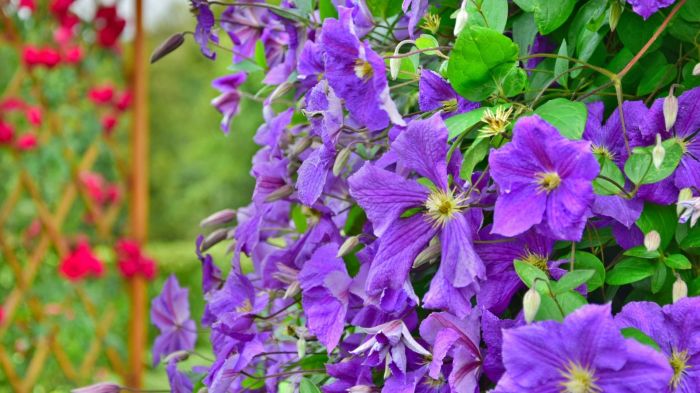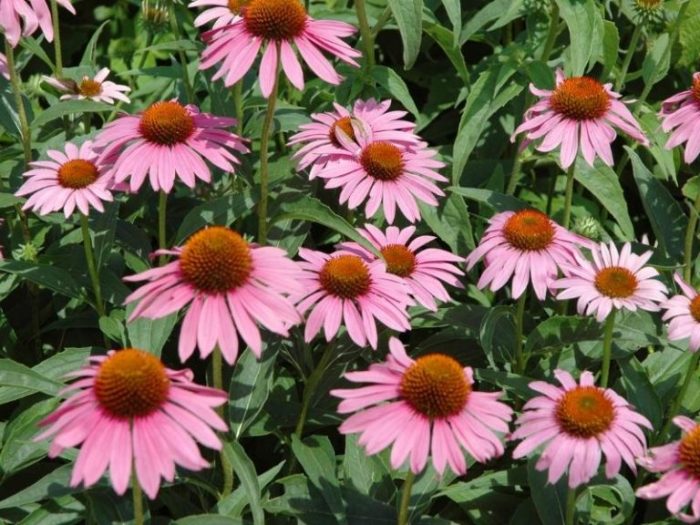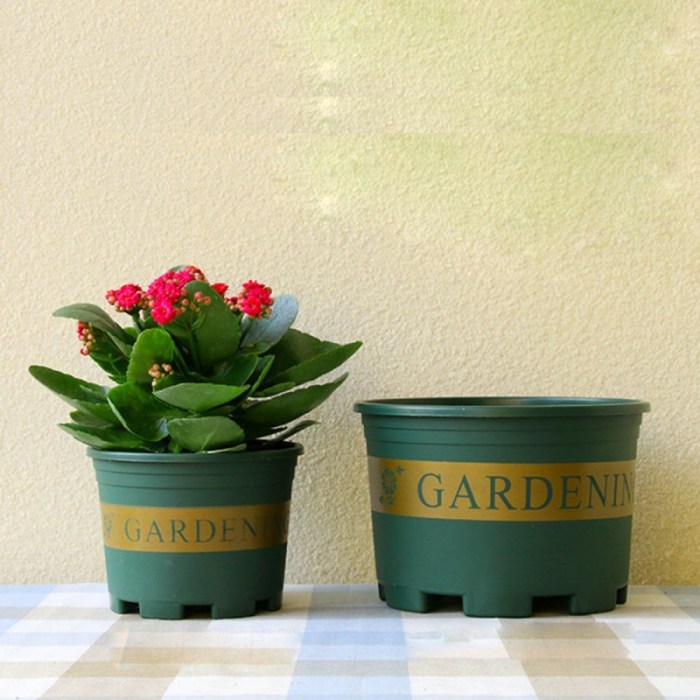Potting and Soil Selection: Grow A Pot Plant

Grow a pot plant – Okay, so you’ve got your lil’ plant, and it’s totally vibing, but it’s outgrowing its current digs. Time for a repot! This ain’t rocket science, but getting it right makes a huge difference in how your plant thrives. Choosing the right pot and soil mix is key, like, seriously key.Repotting an Existing Plant
Repotting Steps
Yo, repotting is low-key easier than you think. First, grab a pot that’s only slightly bigger than the current one – like, maybe 1-2 inches in diameter. Going too big can lead to overwatering issues. Choose a pot with drainage holes, that’s a must-have to avoid root rot, which is, like, total plant death. Then, gently remove your plant from its old pot.
If it’s stuck, run some water around the edges to loosen the roots. Gently tease apart any tangled roots, but don’t go crazy; you don’t wanna stress it out. Place a layer of fresh potting mix at the bottom of the new pot, then carefully place your plant in its new home. Fill in the gaps with more potting mix, leaving about half an inch of space from the rim.
Give it a good watering, and you’re done! Easy peasy, lemon squeezy.
Creating a Custom Potting Mix
Making your own potting mix is totally rad if you know your plant’s needs. It’s all about finding the perfect balance of drainage and moisture retention. A good starting point is a mix of potting soil, perlite, and vermiculite. Potting soil provides nutrients, perlite improves drainage, and vermiculite helps retain moisture. The exact ratio depends on the plant.
For example, a succulent, which hates soggy soil, might need a mix that’s heavy on perlite, maybe something like 2 parts potting soil, 1 part perlite, and 1 part vermiculite. A fern, which loves moisture, might prefer a mix with more potting soil and less perlite, like 3 parts potting soil, 1 part perlite, and 1 part vermiculite. Always adjust based on your specific plant’s needs.
Types of Potting Mixes
Okay, so you don’t wanna DIY? No worries, there are tons of pre-made mixes. Here are three common types:
All-Purpose Potting Mix
This is, like, the basic, go-to mix for most plants. It’s usually a blend of peat moss, vermiculite, and perlite. It’s pretty versatile, but might not be ideal for plants with super specific needs. It’s readily available and affordable.
Cactus and Succulent Potting Mix, Grow a pot plant
This mix is designed for plants that need excellent drainage, so it usually has a higher proportion of perlite and less peat moss. It prevents overwatering and root rot, which is a major killer for these desert dwellers. However, it might dry out faster, requiring more frequent watering.
Seed Starting Mix
This is super fine and loose, perfect for delicate seedlings. It has excellent drainage and aeration to support the roots as they develop. It’s usually peat-based, but some blends use coconut coir as a more sustainable alternative. However, it might not be suitable for mature plants as it lacks nutrients for sustained growth.
Watering and Light Requirements

Okay, so you’ve got your plants all potted up and lookin’ fly, right? Now, the real challenge begins: keeping those babies alive and thriving. We’re talkin’ about watering and light – two major keys to plant happiness. Get these wrong, and your plant’s gonna be lookin’ more like a sad, wilted noodle than a lush green paradise.Watering your plants isn’t just about tossing some H2O on them whenever you feel like it.
It’s a delicate dance between avoiding drowning them and letting them completely dry out. Different plants have different needs, so you gotta pay attention to the details.
Growing a pot plant is rewarding, but finding the right spot can be tricky. If you’re short on space, consider placing your plant on a windowsill using a sturdy plant pot holder for sill to keep it safe and prevent accidental knocks. This ensures your plant gets plenty of light while keeping your windowsill tidy and your plant happy and thriving.
Proper Watering Techniques
Yo, let’s get this straight: overwatering is like a total plant killer. It leads to root rot, which is basically a death sentence for your green friend. Underwatering, on the other hand, will make your plant look like it’s been through a total drought. So, how do you find that sweet spot?Imagine a succulent versus a fern.
A succulent, that’s a total desert dude, stores water in its leaves. You only water that when the soil is completely dry, like, seriously bone dry. Water deeply, letting excess water drain out the bottom. Think of it like giving it a good long drink, not a quick sip. Now, a fern?
That’s a total rainforest creature. It loves moisture, so you’ll water it more often, keeping the soil consistently moist, but not soggy. Always check the soil before watering – stick your finger in there! If it’s dry an inch or two down, it’s watering time.
Light Requirements for Indoor Plants
Sunlight is like, the plant’s main source of energy, the whole shebang. Different plants need different amounts of light, so knowing your plant’s light requirements is key.Low light plants, like snake plants and ZZ plants, are totally chill with indirect sunlight or even a shady spot. They’re like the introverts of the plant world. Medium light plants, like pothos and peace lilies, are pretty adaptable.
They’ll do well in bright, indirect light – think a spot a few feet away from a window. High light plants, like succulents and cacti, are total sun worshippers. They need direct sunlight for several hours a day. If you don’t give them enough sun, they’ll start to stretch and look leggy.
Signs of Overwatering and Underwatering
Okay, so you’ve got your watering schedule down, but how do you know if you’re doing it right? Well, your plants will totally let you know if something’s up.Overwatering signs: Yellowing leaves, drooping even with moist soil, mushy stems, and a foul odor coming from the soil are all major red flags. If you spot these, let the soil dry out completely before watering again.
You might even need to repot the plant in fresh, dry soil to save it.Underwatering signs: Dry, brittle soil, wilting leaves that don’t perk up after watering, and brown, crispy leaf edges. If your plant’s showing these symptoms, give it a good, deep watering and keep an eye on it. It might take a while to recover.
Plant Care and Maintenance

Okay, so you’ve got your plants all potted and chillin’, but the journey doesn’t stop there, fam! Keeping your plant babies thriving requires some TLC, and I’m here to spill the tea on how to keep them looking totally fly. We’re talking about feeding them right, dealing with any drama (aka pests and diseases), and giving them a fresh cut (aka pruning) to keep them looking bomb.
Fertilizing Schedules for Potted Plants
Yo, plants need nutrients just like us, right? Different plants have different needs, and the time of year matters too. Think of it like this: summer is their party time, so they need more fuel. Winter’s their chill sesh, so they need less. Using the wrong fertilizer or too much can totally wreck your plants, so listen up!
- Low-light plants (Snake plants, ZZ plants): Fertilize once a month during spring and summer with a diluted, balanced liquid fertilizer (like a 10-10-10). Skip fertilizing in fall and winter. Too much fertilizer can burn their roots.
- Moderate-light plants (Pothos, Spider plants): Fertilize every two weeks during spring and summer with a balanced liquid fertilizer. Reduce to once a month in fall and then stop completely in winter. These guys are pretty adaptable, but over-fertilizing can still lead to brown leaf tips.
- High-light plants (Succulents, Cacti): These desert dwellers don’t need much. Fertilize only once or twice during the growing season (spring/summer) with a diluted cactus/succulent fertilizer. Too much fertilizer will lead to root rot – total bummer!
Remember, always follow the instructions on your fertilizer’s packaging. It’s better to under-fertilize than to overdo it.
Common Pests and Diseases
No one likes pests crashing the party, especially not your plants! Knowing the enemy is half the battle. Here are some common villains and how to slay them:
- Spider mites: Tiny, but they cause major damage. Look for fine webbing on leaves. Treat with insecticidal soap or neem oil. A strong spray of water can also help knock them off.
- Mealybugs: Cottony white insects that suck plant juices. Manually remove them with a cotton swab dipped in rubbing alcohol, or use insecticidal soap.
- Root rot: Caused by overwatering. Symptoms include yellowing leaves and mushy stems. Try repotting in fresh, well-draining soil, and adjust your watering habits.
- Fungal diseases: Often appear as spots or discoloration on leaves. Improve air circulation, avoid overwatering, and use a fungicide if necessary.
Prevention is key, peeps! Regularly inspect your plants, and quarantine any new plants before introducing them to your existing collection.
Pruning and Shaping Potted Plants
Pruning isn’t just about keeping your plants looking fresh; it’s about promoting healthy growth. It’s like giving them a haircut – it makes them look better and helps them grow stronger.
- Inspect your plant: Before you start snipping, carefully examine your plant to identify any dead, damaged, or diseased leaves or stems. These should be removed first.
- Choose your tools: Use sharp, clean pruning shears or scissors to make clean cuts. Dirty tools can spread diseases.
- Make your cuts: Cut just above a leaf node (where a new leaf or branch might sprout) for most plants. For specific plants, research the best pruning techniques.
- Remove spent flowers: Deadheading (removing spent flowers) encourages more blooms on flowering plants.
- Clean up: Dispose of the pruned material properly to prevent the spread of pests and diseases.
Remember, different plants have different pruning needs. Do your research before you get started, and don’t be afraid to ask for advice from a local plant expert or nursery. It’s better to be safe than sorry!
Q&A
What if my plant starts drooping?
Could be underwatering or overwatering, mate. Check the soil – if it’s bone dry, give it a good drink. If it’s soggy, let it dry out a bit before watering again.
How often should I fertilize my plants?
Depends on the plant, but generally, during the growing season (spring/summer), a monthly feed is a good shout. Use a balanced liquid fertilizer, diluted according to the instructions.
What’s the best way to repot a plant?
Gently remove the plant from its old pot, loosen the roots a bit, and pop it into a slightly larger pot with fresh potting mix. Water it in well.
My plant has weird bugs on it! What do I do?
Check for common pests like aphids or spider mites. You can try wiping them off with soapy water, or use a suitable insecticide if needed. Get a proper plant doctor involved if you’re clueless!



